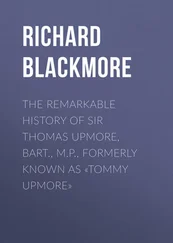Thomas Akins - History of Halifax City
Здесь есть возможность читать онлайн «Thomas Akins - History of Halifax City» — ознакомительный отрывок электронной книги совершенно бесплатно, а после прочтения отрывка купить полную версию. В некоторых случаях можно слушать аудио, скачать через торрент в формате fb2 и присутствует краткое содержание. Жанр: foreign_antique, foreign_prose, Историческая проза, на английском языке. Описание произведения, (предисловие) а так же отзывы посетителей доступны на портале библиотеки ЛибКат.
- Название:History of Halifax City
- Автор:
- Жанр:
- Год:неизвестен
- ISBN:нет данных
- Рейтинг книги:3 / 5. Голосов: 1
-
Избранное:Добавить в избранное
- Отзывы:
-
Ваша оценка:
- 60
- 1
- 2
- 3
- 4
- 5
History of Halifax City: краткое содержание, описание и аннотация
Предлагаем к чтению аннотацию, описание, краткое содержание или предисловие (зависит от того, что написал сам автор книги «History of Halifax City»). Если вы не нашли необходимую информацию о книге — напишите в комментариях, мы постараемся отыскать её.
History of Halifax City — читать онлайн ознакомительный отрывок
Ниже представлен текст книги, разбитый по страницам. Система сохранения места последней прочитанной страницы, позволяет с удобством читать онлайн бесплатно книгу «History of Halifax City», без необходимости каждый раз заново искать на чём Вы остановились. Поставьте закладку, и сможете в любой момент перейти на страницу, на которой закончили чтение.
Интервал:
Закладка:
All proprietors of land upon the peninsula of Halifax were directed to clear half their lots by 1st May, 1753, to clear the remainder and fence the whole by 1st May, 1754, otherwise the lots would be forfeited and be disposed of to others who would improve them. And an order was made for permission to John Connors, to assign the Dartmouth Ferry to Henry Wynne and William Manthorne.
Among the local events recorded this year, was a robbery in one of the King's storehouses, which was broken open on the night of the 26th October. There was also a cartel published by Governor Hopson, for the exchange of prisoners with the French Government in Canada.
The most important circumstance of the year, however, was a charge against the Justices of the Inferior Court of Common Pleas, sent in to the Council by a number of the most influential inhabitants, charging them with partiality, and praying for a public hearing. This document was presented to the Council in December, and was signed by Joshua Mauger, Joseph Rundel, Isaac Knott, John Grant, Francis Martin, Edward Crawley, Richard Catherwood, Robert Campbell, William Nesbitt, John Webb, William McGee, Sebastian Zouberbuhler, Samuel Sellon and Isaac Deschamps. These charges came on for hearing before the Council on 3rd January following; they consisted of ten distinct charges against Charles Morris, James Monk, John Duport, Robert Ewer and William Bourn, Esquires, Justices of the Inferior Court of Common Pleas, for the Town and County of Halifax, and were signed by the following inhabitants:
Joshua Mauger,
S. Zouberbuhler,
Samuel Sellon,
Edward Buckleton,
James Porter,
Daniel Wood,
Jonathan Gifford,
William Schwartz,
Edward Crawley,
William Jeffray,
Vere Rous,
Francis Martin,
John Brooks,
Henry Wilkinson,
William Nesbitt,
John Woodin,
James Ford,
George Featherstone,
Thos. Mattison,
Joseph Antony,
Alex. Kedy,
James Fullon,
William Murray,
Louis Triquet,
William Clapham,
John Webb,
Robert Catherwood,
John Walker,
Geo. Peter DeBreg,
Richard Hollis,
Henry Sibley,
Edward O'Brien,
Henry O'Brien,
Thos. Wynne,
John Grant,
William Vanselson,
Cheyne Brownjohn,
Richard Tritton,
Edward Lukey,
Cyrus Jannin,
John Willis,
Roger Hill,
Js. Deschamps,
Robert Grant,
William McGee,
Joseph Rundel.
This affair arose from a dispute which occurred between the Government and Captain Ephraim Cook, who had been discharged from the Commission of the Peace by Governor Cornwallis for bad behaviour, and appears to have been the result of party feeling.
It resulted in additional numbers being added to the bench of Magistrates, and the Governor and Council availed themselves of this affair to urge upon the Government the necessity of having a Chief Justice.
The necessity of a properly organized Militia force being kept up, had become apparent, in consequence of the continual threats of hostility on the part of the Indians and native French; it was therefore resolved on 22 March, 1753, that a Militia should be raised and established for the security of the Province, and a proclamation was accordingly issued, compelling all persons (except foreigners, who were to be placed elsewhere) between the ages of 16 and 60, to serve in the Militia.
On the first day of June, another proclamation was issued for a muster of the Militia. Those of the south suburbs to assemble within the pickets opposite the end of Barrington Street, near Horseman's Fort. Those of the north suburbs, between the Grenadier Fort and Lutteral's Fort, and those of the town on the esplanade, near the Citadel Hill.
On the 12th of April, 1753, Glaude Gisigash, an Indian who styled himself Governor of LaHave, appeared before the Council, and having declared his intention of making peace, terms of amity were drawn up and signed by the Governor and the Indian Chief, on the part of himself and his people. The terms were the same as those made with Major Cope, and it was arranged that some of his tribe should come up and ratify the treaty.
Governor Hopson went home on leave in the autumn of 1753, and the government was administered by Col. Lawrence. In one of his last letters to the Board of Trade, in reference to the disturbed state of the country, Governor Hopson says, "Your Lordships may imagine how disagreeable it is to me to see His Majesty's rights encroached upon, and those encroachments openly avowed and supported by the Governors of Canada and Louisburg, when it is not in my power to prevent it. I have barely a sufficient force to protect the settlers from the insults of an Indian war, under pretence of which the French take all opportunity to commit hostilities upon His Majesty's subjects. I am informed that the French have often been mixed among them in the expeditions, and am convinced past doubt that they are fed and protected from our pursuit, and are encouraged to disturb us as openly and in as great a degree as in time of war."
There were three still houses in Halifax in 1753. Mr. Best the master mason, and Mr. Clewley the master carpenter, having been ordered to inspect them. The return was as follows:
Mr. Richard Bowers, 2 stills in Granville Street.
Wm. Murray, 1 still in Grafton Street, reported not safe.
Jonathan Gifford, 1 still in Barrington Street.
October 16th, Mr. John Greenwood presented a petition to the Council, stating that he had paid passage for 12 men, 1 woman and 2 children, foreign settlers, with the Governor's leave. They engaged to serve him for a year, but having been removed to Lunenburg by the Governor's orders, he lost their services; he was allowed £79 5s., the labour of 12 men for 96 days.
Governor Hopson took leave of the Council on 26th October, and received an address on his departure. He sailed for England on the 2nd November following.
On the 16th November, two Indians appeared before the Council, who had been sent from Lunenburg by Col. Sutherland. They stated they were of the tribe of Cape Sable Indians, which consisted of about 60 people with two chiefs; that Baptiste Thomas, one of their priests, was one of their chiefs, and the other Francis Jean de Perisse was not a chief, but deputed by the other chief. They stated that they had never joined with the other Indians to molest the English; that on the contrary they had always exhibited a friendly spirit, in consequence of which they had never received any assistance from the French. The Council gave them 2000 pounds of bread, 3 barrels of pork, 20 blankets, 30 pounds powder, some shot, tobacco and other articles, also two gold-laced hats for their chiefs, and one silver-laced for the deputy.
The close of this year was occupied by the Governor and Council, in investigation of the riots which occurred at Lunenburg, known as the Hoffman Rebellion. It was found necessary to send Col. Monkton with a body of regular troops to suppress the riots. Mr. Hoffman, the supposed ringleader, was brought to Halifax and imprisoned on George's Island. He was afterwards tried and sentenced to a fine of £100 or two years imprisonment.
It may be proper to advert to the religious condition of the settlement at this period. The greater portion of the inhabitants were at this time of the Church of England. The Protestant Germans had nearly all united themselves to that Church, and sought missionaries from the S. P. G. Society.
The Rev. John Breynton succeeded Mr. Tutty in St. Paul's. In 1752, he reported that half of the population had professed themselves members of the Church, and that the actual communicants were between 500 and 600.
Mr. Breynton established an Orphan House, and the Orphan School was under his superintendence. In 1753, fifty poor children were diligently instructed. Ralph Sharrock was the school-master. In 1753, the Rev. Thomas Wood from the Province of New Jersey, was appointed to assist Mr. Breynton, and he remained jointly in charge with Mr. Breynton until 1763, when he was removed to Annapolis.
Читать дальшеИнтервал:
Закладка:
Похожие книги на «History of Halifax City»
Представляем Вашему вниманию похожие книги на «History of Halifax City» списком для выбора. Мы отобрали схожую по названию и смыслу литературу в надежде предоставить читателям больше вариантов отыскать новые, интересные, ещё непрочитанные произведения.
Обсуждение, отзывы о книге «History of Halifax City» и просто собственные мнения читателей. Оставьте ваши комментарии, напишите, что Вы думаете о произведении, его смысле или главных героях. Укажите что конкретно понравилось, а что нет, и почему Вы так считаете.












